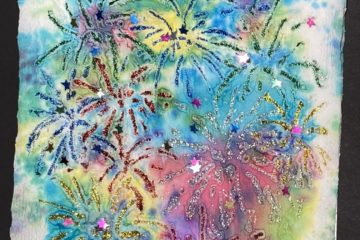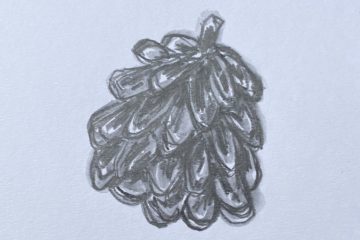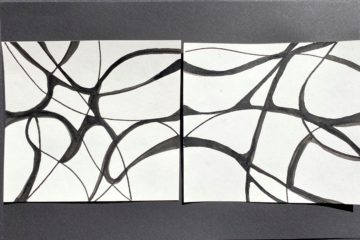Happy 2022!
As you know, one of my main focuses when creating and teaching art is the use of re-purposed materials. Mostly, you’ll see me take items that aren’t specifically called “art supplies” and use them as art supplies, but this winter scene came about a little differently.
For a very long while I had a watercolor wash taped to a board, just laying around. I had been experimenting and practicing with the paints for another project, and what I was doing really was not working out. Since I wasn’t happy with it, I stopped before adding more and let the watercolors. When dried, the colors were interesting enough to me that I kept the half-completed work in the hope that I would be inspired to do something with it someday. Every failed painting experiment can, at the very least, be cut up and used in a collage.
Since we are at the beginning of the winter season, and I live in southern California, I love seeing photos of beautiful snowy yards, forests, and other outdoor scenes. Those scenes remind me of my childhood growing up near the Great Lakes and, though I don’t miss the snow shoveling, how magical it felt every year during the first snowfall.
So, I started to create and experiment again, first using my ruling pen to attempt some fir tree drawings to see what textures I could create. It was almost like scribbling at first: start at the top and try to create boughs on my way down the tree. It seemed easy enough, and they did look like fir trees, but it was missing something…snow! I put a little on with some paint, but it was tough to see.
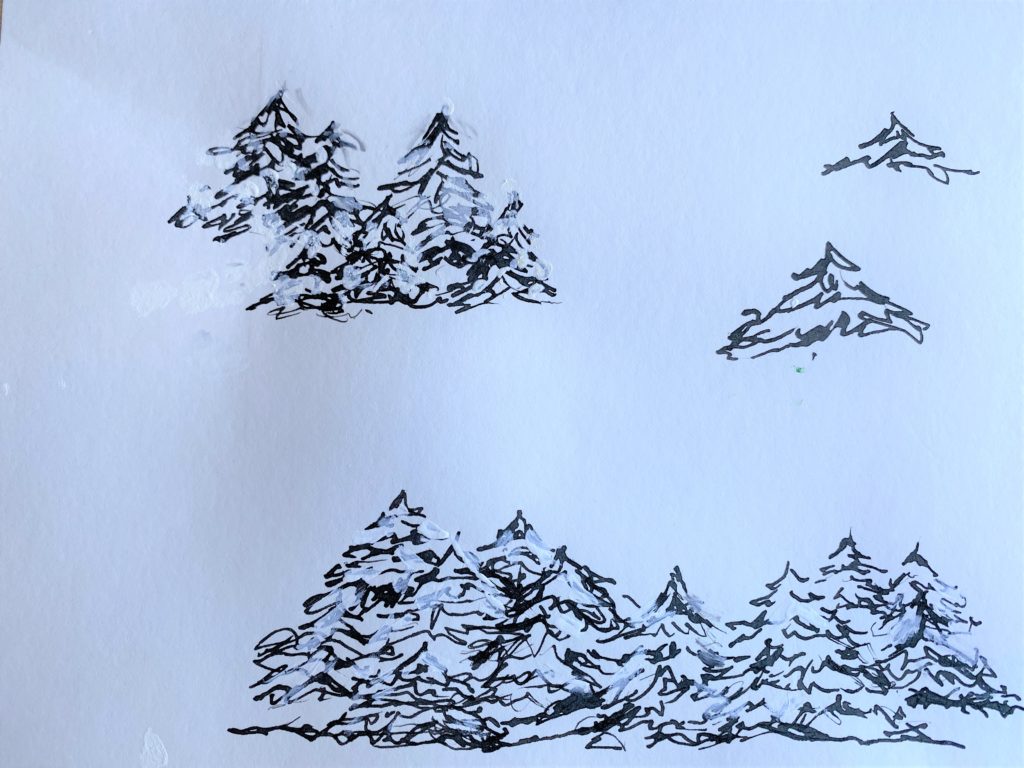
It might not immediately make sense, but my mind went to that abandoned watercolor wash. I needed something pigmented as a background to the ink drawings, so that, when I figured out how to add snow, the white would pop. The colors in the watercolor wash weren’t exactly what I think of when I think of winter, it was more of a summer palette, but I was determined to incorporate it with the trees.
First, I cut the 9×12 watercolor paper in half, thinking it would work better with my ruling pen. I’m still working on my confidence using the ruling pens on bigger pieces, but for now I feel more comfortable working smaller with that tool.
Looking at the now 6×9 watercolor paper, I imagined drawing enough fir trees to create the forest in my mind, filing out bigger and more detailed trees in the forefront and smaller to create the ones in the distance. It was a bit overwhelming, and I and decided that the paper was still too big. I went back to the cutting board.
Now I had a decision to make, since the watercolor wash had different ratios of sky (blue) and earth (green) in each part of the original painting. I needed to choose which areas would work best for me and that required a good balance of color. So, I snipped and cut until I felt I had the right size with appealing colors and ended up with two 5×5 pieces.
This took more time to work out than my actual drawing.
My first practice, or the “sloppy-copy”, turned out well enough after the ink drawing of trees on the watercolor wash background, but I missed that snow. Time to bring out my trusty white tempera paint.
I thought for sure the white tempera would work well, so imagine my confusion when it soaked into the surface and was almost translucent! Even after reapplying it several times, I could not get the look of snow on my trees. What to do? How could I get that sparkling, freshly fallen snow to show up on my drawing?
Then I thought…”oh no, not that!” as my mind went to the dreaded glitter.
I am not a fan of glitter as it seems to find its way into and onto everything, but I pulled mine out anyway. I happened to have a “white” glitter which reflects color in the way I wanted for this piece, and even though it’s not even close to my favorite material, I had a good feeling it would work. I put one more dab of white tempera on (as a glue) and sprinkled away.
Still, it was still lacking that brilliant white for snow! I really wanted to make this piece work, so I had to try something else.
Time for plan B, white acrylic paint, which was the right move. It settled on top of the surface and brought the needed brilliance. Seeing how well the acrylic paint worked, I briefly considered abandoning the glitter, but it added dimension and some fun to the piece and now I couldn’t imagine my snow without it.
Here is the completed first painting:
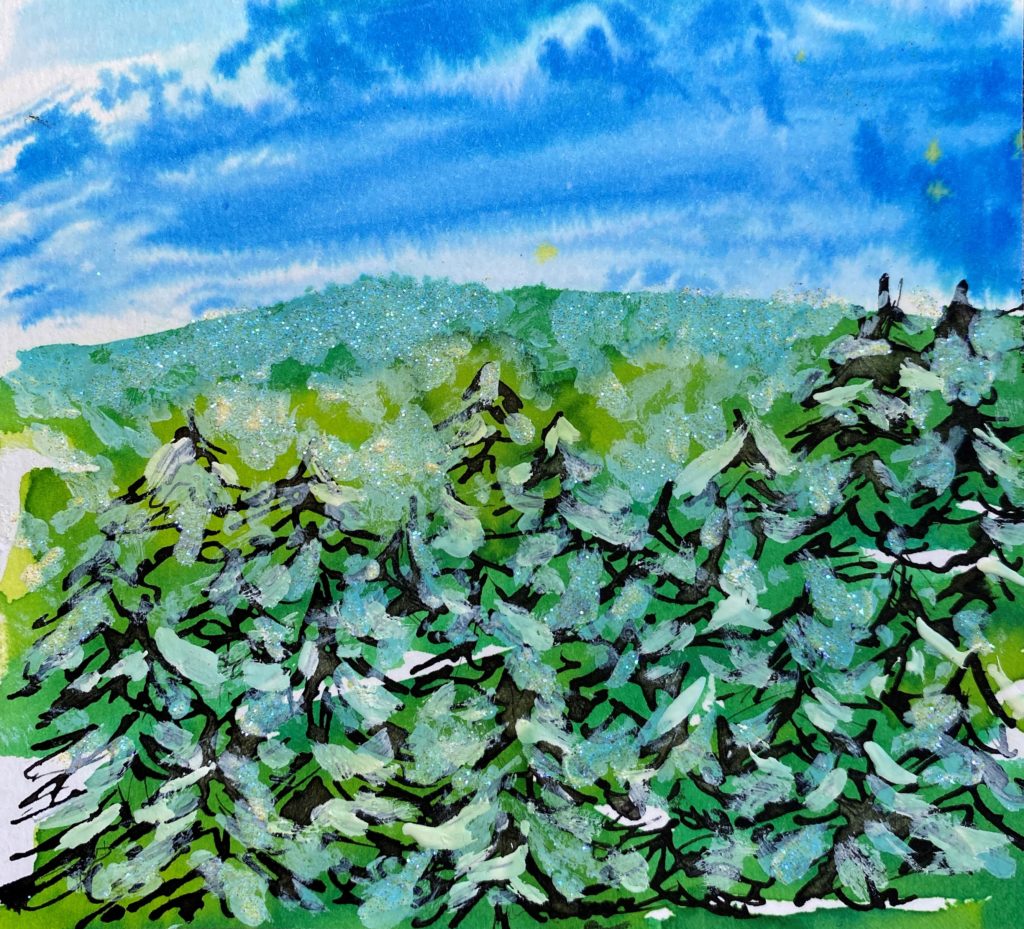
After the paint dried, the white was more subtle than I would have liked, but overall I am happy with how it turned out. Here is the finished piece from the time-lapse video above:
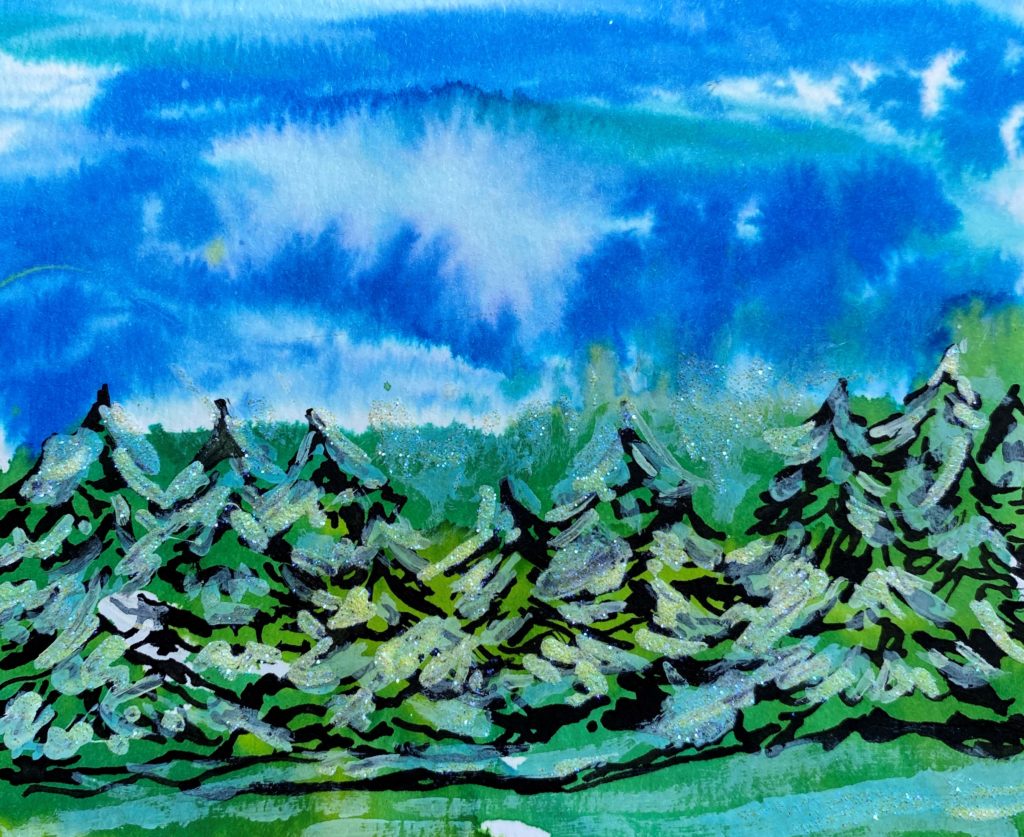
I did all this with a repurposed background, a ruling pen, black India ink, some white paint, and glitter. While my winter wonderland scene evolved, I learned some things and adjusted my attitude about glitter.
